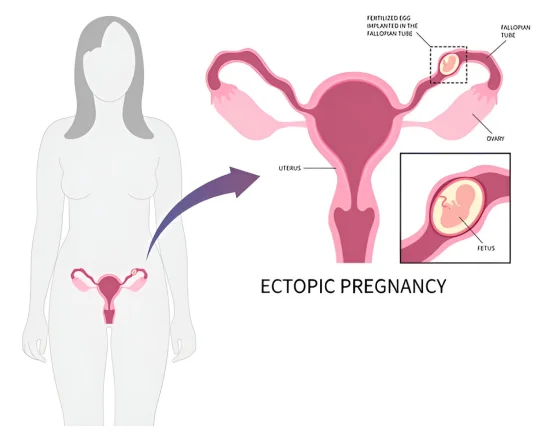Parathyroidectomy is a surgical procedure performed to remove one or more of the parathyroid glands. These tiny glands, located in the neck behind the thyroid, play a critical role in maintaining calcium levels in the body. While they are small—each one about the size of a grain of rice—their impact is enormous. When these glands malfunction, they can disrupt the body’s calcium regulation, leading to serious health problems.
what is parathyroidectomy, when it’s needed, how it’s performed, and what patients can expect before and after the surgery. Understanding this procedure can help patients make informed decisions about their treatment and long-term health.
Understanding the Parathyroid Glands
The parathyroid glands are four small glands located near the thyroid gland in the neck. Despite their name, they have no function related to the thyroid. Their primary job is to regulate calcium and phosphorus levels in the blood through the production of parathyroid hormone (PTH). This hormone controls the amount of calcium absorbed from the diet, released from bones, and excreted through the kidneys.
When one or more of the parathyroid glands become overactive—a condition known as hyperparathyroidism—they produce too much PTH. As a result, calcium levels in the blood rise excessively, leading to symptoms and complications that may require surgical intervention.
What is Parathyroidectomy?
Parathyroidectomy is the surgical removal of one or more parathyroid glands. It is most commonly performed to treat primary hyperparathyroidism, a condition in which one or more of the glands produce excess hormone, usually due to a benign tumor (adenoma). In some cases, the condition can be related to gland enlargement or, rarely, cancer.
Surgery becomes necessary when blood calcium levels become persistently high or when the patient begins experiencing symptoms or complications such as bone loss, kidney stones, abdominal pain, muscle weakness, or neuropsychiatric issues.
When is Parathyroidectomy Recommended?
Doctors may recommend parathyroidectomy in the following situations:
- Blood calcium levels are significantly elevated over time.
- The patient is experiencing symptoms such as fatigue, confusion, kidney stones, bone pain, or osteoporosis.
- A parathyroid adenoma is clearly identified through imaging or lab tests.
- Non-surgical treatments (like medication or monitoring) are not effective.
- The patient has secondary hyperparathyroidism due to chronic kidney disease.
- The overactivity is causing damage to other organs or systems.
Parathyroidectomy is considered the most effective and permanent treatment for primary hyperparathyroidism. In most cases, it leads to normalization of calcium levels and an improvement in symptoms.
Types of Parathyroidectomy
There are several surgical approaches depending on the location and number of glands involved:
- Minimally Invasive Parathyroidectomy (MIP) :- This is the most common type today. Surgeons use imaging to locate the abnormal gland and remove it through a small incision. It is less invasive and has a shorter recovery time.
- Bilateral Neck Exploration :- Used when preoperative imaging is inconclusive or when multiple glands might be involved. The surgeon explores both sides of the neck to evaluate all four glands.
- Focused Parathyroidectomy :- This technique targets only the specific gland that is known to be overactive, as identified on scans or blood tests.
- Subtotal or Total Parathyroidectomy :- In rare cases where all four glands are overactive, a portion or all of them may be removed. Sometimes, a small piece of one gland is reimplanted in another part of the body, such as the forearm, to preserve some hormone function.
Preparing for Surgery
Before surgery, patients typically undergo a series of diagnostic tests, including:
- Blood tests to measure calcium and PTH levels
- Urine tests to assess calcium excretion
- Bone density scans to evaluate for osteoporosis
- Imaging studies, such as ultrasound, sestamibi scan, or 4D CT, to locate the abnormal gland(s)
Patients may also undergo a routine physical exam and be advised to stop certain medications prior to the operation. Fasting is usually required the night before the surgery.
How the Procedure is Performed
Parathyroidectomy is usually performed under general anesthesia and takes about one to two hours, depending on the complexity. In a minimally invasive approach, the surgeon makes a small incision in the neck and uses imaging guidance and sometimes intraoperative PTH monitoring to confirm successful removal of the overactive gland.
Once the diseased gland is removed, the remaining glands are examined to ensure they are healthy. In most cases, only one gland is removed, and the others are left untouched.
After surgery, patients are monitored in a recovery area, and most go home the same day or after an overnight observation.
Recovery After Parathyroidectomy
Recovery from a minimally invasive parathyroidectomy is generally quick. Most patients return to normal activities within a few days. Soreness at the incision site, mild hoarseness, or neck stiffness may be present for a short time.
Calcium and PTH levels are closely monitored after surgery. In some cases, calcium levels may temporarily drop after the removal of an overactive gland—a condition known as hungry bone syndrome—which may require calcium supplements.
Patients are typically advised to follow up within one to two weeks to assess recovery and ensure calcium levels remain stable. Full recovery, including improvement of symptoms like fatigue, bone pain, and mood changes, may take a few weeks to months.
Risks and Complications
Like any surgery, parathyroidectomy carries certain risks, though they are relatively rare in experienced hands. These may include:
- Bleeding or hematoma at the surgical site
- Infection
- Injury to nearby structures like the recurrent laryngeal nerve, which can cause hoarseness
- Low calcium levels after surgery
- Need for additional surgery if not all abnormal glands are removed
The risks are significantly reduced when the procedure is performed by an experienced endocrine or head and neck surgeon.
Long-Term Outcomes
Parathyroidectomy has an excellent success rate, especially in cases of primary hyperparathyroidism due to a single adenoma. More than 95% of patients are cured after surgery. In addition to normalizing calcium levels, many patients experience significant improvements in bone density, kidney function, energy levels, mood, and mental clarity.
Patients with secondary or tertiary hyperparathyroidism—typically those with chronic kidney disease—may have a more complex course but can still benefit from surgery when medical treatment fails.
Conclusion
Parathyroidectomy is a highly effective and safe procedure for treating disorders of the parathyroid glands, particularly hyperparathyroidism. When performed at the right time and by the right team, it not only relieves troubling symptoms but also prevents long-term complications such as fractures, kidney stones, and cardiovascular issues.
If you’ve been diagnosed with hyperparathyroidism or are experiencing unexplained symptoms like fatigue, bone pain, or high calcium levels, speak with an endocrinologist or surgeon. With proper evaluation and surgical care, parathyroidectomy can be a life-changing procedure with lasting health benefits.























